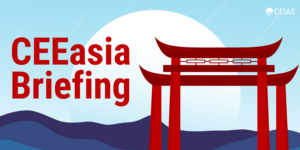The Austrian government has established its Hydrogen Strategy, which stresses the importance of international partnerships. Indonesia, with its untapped hydrogen resources, should see this as an opportunity to harness Austrian FDI and enhance its pathway to a green economy.
Key takeaways:
-
Austria offers a subsidy for renewable hydrogen production, aiming to strengthen its role as a hub for the hydrogen economy and enhance international cooperation in the sector.
-
Despite their substantial hydrogen reserves, developing economies, including Indonesia, often face significant financing and technical challenges in their transition to a green economy.
-
Austrian investment in Indonesia’s hydrogen reserves might become a medium that benefits both countries. However, the Indonesian government must take steps to ensure that its positive spillover effects are realized.
Austria has made significant strides in developing its renewable energy sector, with a particular focus on the emerging hydrogen industry. One of the flagship initiatives in this area is the Hydrogen Valley project, which has secured EU funding and aims to decarbonize domestic industry by implementing 17 hydrogen projects. These projects, coordinated by the WIVA P&G research institute in collaboration with 48 partners, represent a total investment of €578 million, including an initial €20 million in EU support. They cover the entire hydrogen value chain—from production and transportation to storage and usage—and aim to produce over 10,000 tons of green hydrogen annually.
In May 2024, the Austrian government passed a law to subsidize renewable hydrogen production. This legislation allocates €400 million to projects selected through a competitive bidding process, offering fixed premium subsidies over a 10-year period beginning in 2024. An additional €420 million is planned for the 2025-2026 period, reflecting Austria’s commitment to scaling up its hydrogen sector.
These efforts form a core part of Austria’s Hydrogen Strategy, which aims to establish the country as a hub for hydrogen technology and innovation. Given that Austria’s demand for renewable energy is expected to surpass domestic production by 2040, the strategy emphasizes the need for international partnerships to secure climate-neutral hydrogen supplies from outside the EU.
Why is this important for Indonesia?
Emerging economies, such as Indonesia, often face substantial financing and technical challenges in their transition to green energy. Projects related to renewable energy, waste management, and sustainable infrastructure require both capital and specialized expertise, which may be beyond the reach of many local firms. This is where European companies, including Austrian firms with significant global experience in green hydrogen and wind energy, can play a critical role by transferring knowledge, technology, and capital to support local sustainability efforts.
For Indonesia, this presents a strategic opportunity to deepen bilateral cooperation in the hydrogen sector. This collaboration could attract substantial foreign direct investment (FDI), aligning with Indonesia’s National Energy Grand Strategy and low-carbon roadmap. For instance, Austrian companies like Andritz, which has developed hydropower infrastructure in Indonesia for over a century, offer a strong foundation for further collaboration. With over 15 domestic hydrogen sources already identified, Indonesia has significant potential to become a key player in the global hydrogen market. The Indonesian government aims to attract $25.2 billion in private sector investments for green hydrogen infrastructure by 2060, according to the Green Hydrogen Organization.
Additionally, Indonesia stands to benefit from the technological expertise of leading Austrian companies, such as Gas Connect Austria, VERBUND Green Hydrogen GmbH, and Wiener Stadtwerke, which are part of the Hydrogen Import Alliances (HIIA). This consortium includes major energy companies, infrastructure operators, and industrial hydrogen consumers, all of whom are keen on securing long-term hydrogen supplies as part of their climate strategies.
What’s in it for Austria?
Austria’s pursuit of HIIAs and secure long-term hydrogen supply chains presents a significant opportunity for collaboration with Indonesia. As Austria diversifies its hydrogen sources, Indonesia offers a promising supply partner with its abundant renewable energy resources, particularly in geothermal and hydropower.
For Austrian companies, Indonesia’s ambitious decarbonization targets represent a significant market opportunity. By 2031, Indonesia aims to decarbonize its transportation sector using green hydrogen, and by 2041, it plans to transition its industrial high-temperature processes away from fossil fuels. These targets, combined with Indonesia’s vast natural resources, create an ideal environment for Austrian green investments that reduce carbon emissions while supporting economic growth.
Moreover, Indonesia is actively developing policies to attract green FDI, supported by the EU through potential financing and technical assistance. This makes it easier for Austrian investors to enter the market and contribute to Indonesia’s renewable energy goals.
What to do next?
However, having abundant natural resources alone is not enough to attract high-quality FDI. Indonesia needs to create a supportive investment environment that addresses both investor confidence and local economic benefits, including knowledge transfer and job creation. Here are some critical steps to consider:
First, Indonesia should establish special economic zones (SEZs) tailored specifically for the hydrogen sector. While the country already has numerous SEZs, none are currently focused on hydrogen. Research by Frick and Rodriguez-Pose highlights the importance of SEZs in attracting FDI, noting that these zones provide critical infrastructure and investment incentives, such as tax breaks, streamlined administrative processes, and labor mobility advantages. However, this approach should be pursued with caution. A recent study by Cecília Hornok and Dewa Gede Sidan Raeskyesa found that SEZ development in Indonesia has increased income inequality in host regions. To mitigate this risk, the government should implement complementary policies, including fair land compensation and vocational training programs, to ensure local communities benefit from these investments.
Second, both governments should expand their cooperation in education and research, building on existing frameworks like ASEA-UNINET. Indonesia should invest in research infrastructure and collaborative projects with institutions like the Austrian Hydrogen Centers (HyCentA), which is based at the Graz University of Technology and focuses on green hydrogen technologies. Increasing research and development (R&D) budgets have been shown to positively correlate with higher FDI inflows, as they signal a commitment to innovation and high-quality industrial growth. This approach would not only support Indonesia’s hydrogen ambitions but also strengthen its position as a competitive player in the global hydrogen market.
As such, Indonesia should develop a clear, long-term hydrogen roadmap that aligns with its broader energy transition goals. This should include specific targets for hydrogen production, infrastructure development, and export strategies, providing clarity for potential investors.






